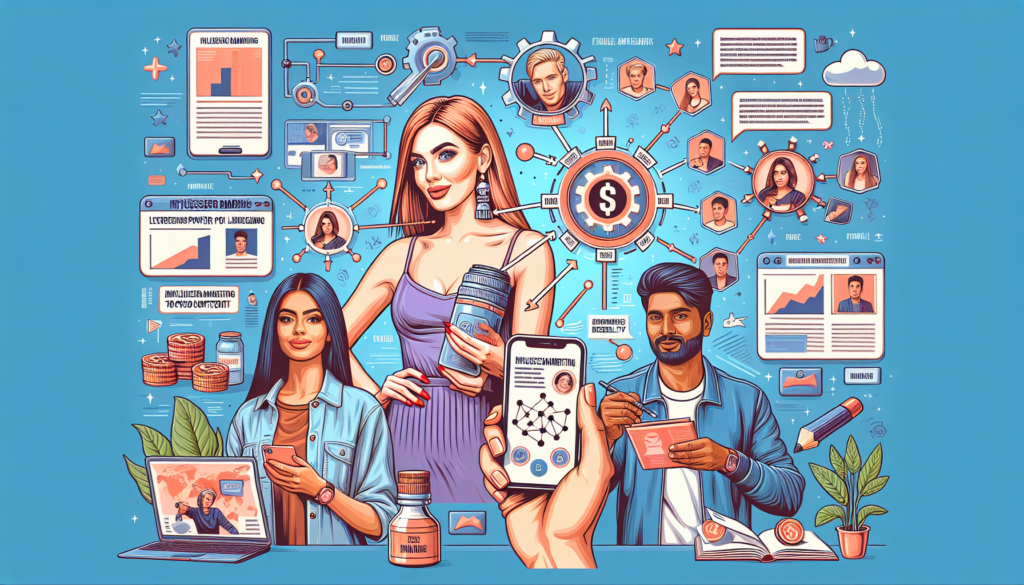Influencer marketing has evolved from being a “nice-to-have” strategy to becoming a central piece of today’s digital marketing tactics. With the overwhelming amount of content generated each day, brands need to ensure that their message not only reaches their target audience but is also relevant and presented in an authentic manner, and this is where the power of influencer marketing comes into play.
Advanced Strategies in Influencer Marketing
The essence of an effective influencer marketing strategy rests on three fundamental pillars: the identification of appropriate influencers, the creation of valuable content, and the precise measurement of the impact generated. These pillars are the foundation upon which brands can build campaigns that not only propagate their content but also generate meaningful interactions and contribute to the return on investment (ROI).
Identification and Selection of Influencers
Selection Criteria
When selecting influencers, brands look beyond reach, focusing on relevance and resonance. These terms, though they may sound similar, represent distinct facets:
- Relevance: Refers to the extent to which an influencer’s content aligns with the brand’s message and values.
- Resonance: Is the influencer’s content ability to generate genuine engagement among their audience.
For the identification of suitable influencers, brands turn to specialized tools that offer in-depth analysis of social metrics, allowing them to sift through potential candidates based on their activity, geographic location, audience demographics, among other factors.
Examples of Tools and Platforms
- HypeAuditor: Allows evaluating the authenticity of an influencer’s followers and predicting the potential impact of a campaign.
- BuzzSumo: Used to identify relevant content creators on specific topics and to monitor brand mentions.
Creation of Valuable Content
Collaboration with Influencers
A symbiotic relationship between the brand and the influencer is fundamental. The most successful brands are those that allow influencers creative freedom, recognizing that their expertise in creating resonant content is invaluable.
User-Generated Content (UGC)
User-generated content (UGC) and co-created with influencers can enhance authenticity, favoring the perception of the message as genuine and credible. Furthermore, UGC is key to content amplification, since content shared by real users is more likely to be trustworthy to their followers.
Measurement and Impact Analysis
Key Metrics
The analysis of results focuses on engagement metrics, conversion rate, and return on investment (ROI). The more advanced metrics include:
- Engagement: Likes, comments, shares, and viewing time.
- Conversion Rate: The percentage of the audience that performs the desired action after interacting with the influencer’s content.
- Return on Investment (ROI): The economic benefit gained compared to the expenditure on the influencer marketing campaign.
Tracking and Analysis Tools
The more specialized tools offer dashboards with real-time analytics, allowing precise tracking of campaign performance, with platforms such as Google Analytics and CreatorIQ.
Practical Applications and Success Stories
The most impactful case studies demonstrate how, when executed correctly, influencer marketing can lead to significant increases both in brand awareness and sales.
Success Story: Daniel Wellington
A notable practical application is the case of Daniel Wellington, which encouraged influencers and customers alike to post photos with the hashtag #DanielWellington. This strategy not only generated sales through discount codes linked to specific influencers but also resulted in mass UGC, thus increasing the brand’s visibility and global positioning.
Innovations and Future Directions
In terms of innovations, artificial intelligence (AI) and deep learning are beginning to play a crucial role in personalizing influencer marketing campaigns by allowing more advanced audience segmentation and trend prediction.
The impact of voice-based marketing, as well as the implications of advances in virtual reality (VR) and augmented reality (AR), also outline as potential arenas for the expansion of influencer marketing.
Conclusion
Influencer marketing shows no signs of slowing down; its power lies in the combination of reach and authenticity. As brands become more sophisticated in their approach and use of influencer marketing, the key to success will lie in the continuous adaptation to emerging trends and the evolution of consumer behavior. With a meticulously planned strategy, brands can maximize the impact of their content, embracing the immense influence of today’s content creators.

